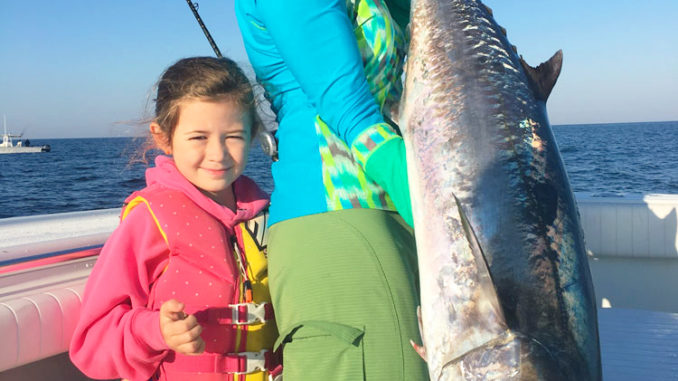
King mackerel off North Carolina’s southeastern coast must keep a calendar just like fishermen and circle the first Friday in October. For several decades, kings have been arriving along the beaches between Cape Fear and the South Carolina state line by that date. It’s uncanny, but it happens like clockwork. They may arrive earlier, but they always put in a big appearance by the first Friday in October.
The abundance of kings along the beaches shouldn’t be a surprise. Two of the two things that drive them are available in spades. First, baitfish are abundant, and all of a king’s favorites are here. Menhaden and mullet schools roam from just behind the breakers out several miles out, and bluefish, Spanish mackerel and more smaller predators gather to feast on them. With kings, everything smaller is in their food chain and is eaten to bulk up for the winter.
Second, the water has cooled to the lower 70s, and kings, like fishermen, prefer the cooler water. Many biologists list kings’ preferred water temperature range at 68 to 78 degrees, and 72 to 74 degrees is typical off Oak Island during October.
Kings move close to the beach to feed on this smorgasbord of baitfish and move into range of lots of fishermen. Action begins with pier anglers and continues with boat fishermen. Early in October, the best action begins about 500 feet off the beach and runs to about 15 miles offshore. The water continues to cool, and by late October, the action has shifted a few miles off the beach, but usually within sight of taller buildings and water towers.
Slow-trolling live baits is a popular way to catch kings, but they also hit dead natural baits and lures — just not as readily. The standard live-bait rig is made of wire, with a pair of 4X strong, No. 4 treble hooks, 5 to 6 inches apart. There are many variations, including more hooks for larger baits, a single hook for the nose hook and other hook spacings for live baits tethered in place around the end of piers or drifted offshore by balloons when the winds are northerly.



